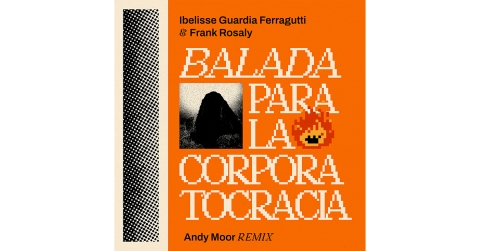David Byrne and Fatboy Slim have paired up for Here Lies Love, a 22-track song cycle about the life of former First Lady of the Philippines Imelda Marcos. Due April 6, the album includes two CDs, a DVD, and a 100-page book detailing the project. In addition to Byrne and Fatboy Slim, Here Lies Love features performances by Santigold, Florence Welch (Florence + The Machine), Sia, Steve Earle, St. Vincent, Natalie Merchant, Tori Amos, Sharon Jones, Nicole Atkins, and many others.
David Byrne and Fatboy Slim have paired up for Here Lies Love, a 22-track song cycle about the life of former First Lady of the Philippines Imelda Marcos and her childhood servant, Estrella Cumpas. Due April 6 on Todomundo/Nonesuch Records, the album includes two CDs of music, a DVD with six videos, and a 100-page hardcover book detailing the project. In addition to Byrne and Fatboy Slim, Here Lies Love features performances by Santigold, Florence Welch (Florence + The Machine), Sia, Steve Earle, St. Vincent, Natalie Merchant, Tori Amos, Sharon Jones, Nicole Atkins, and many others. Along with the recording, The Public Theater in New York City is developing a theatrical version of Here Lies Love for a future production.
Byrne is currently offering a free download of “Please Don’t” (featuring Santigold) at herelieslove.net. In anticipation of the record’s release, the site is premiering five additional streaming tracks from Here Lies Love on a weekly basis along with each track’s corresponding chapter. The streaming tracks are “Here Lies Love,” “Dancing Together,” “Never So Big,” “Solano Avenue,” and “Why Don’t You Love Me?” For a complete album track list, visit nonesuch.com/albums/here-lies-love.
Here Lies Love came into being when Byrne approached Norman Cook (a.k.a. Fatboy Slim) about collaborating after reading of Marcos’ affinity for the clubs and discos of the late 1970s and early 1980s. “The world of a royal court [is] surreal and, to my sensibilities, very theatrical,” Byrne notes, “but now there was an added soundtrack!” Byrne further elaborates: “The story I was interested in was that of Imelda’s rise alongside the tragic parallel story of Estrella, the woman who raised her as a child. I felt that this story was more universal, revealing and profound than that of the shoes—which anyway weren’t discovered until the mobs descended upon the Manila palace after the Marcoses fled. For me the Marcoses’ departure from the palace was the end of the story.”
- Log in to post comments



